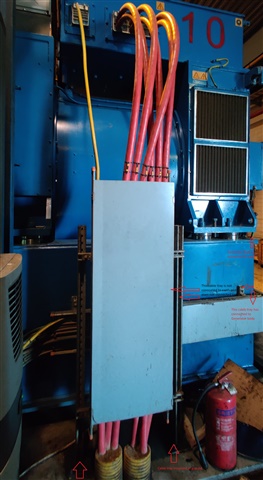WE have some generators which are producing 11KV voltage. 3 Phase cables coming from Generator are passing through the cable tray, so this cable tray body is not connected to earth. Pl see the attached picture for better understanding.
Is there any risk to keep this tray floating or need to connect to earth.
Kindly share your valuable comments. 